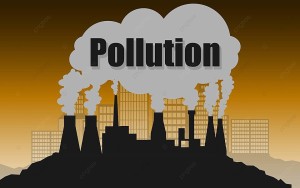Tổ Ngoại Ngữ, Trường THPT Sài Gòn chia sẻ tới thầy cô, phụ huynh và các em học sinh một bài tiểu luận hay bằng tiếng Anh về sự ô nhiễm không khí tại Thành phố Hồ Chí Minh

Air pollution in Ho Chi Minh City: A looming crisis - A Deeper Dive
The Devastating Impact on Respiratory Health
Air pollution in Ho Chi Minh City is not merely an inconvenience; it is a silent killer that wreaks havoc on the respiratory health of its residents. The pervasive presence of PM2.5 particles, the primary pollutant of concern, infiltrates the lungs and triggers a cascade of harmful effects.
These particles, measuring less than 2.5 micrometers in diameter, can penetrate deep into the lungs and even enter the bloodstream. Once lodged in the lungs, they can trigger inflammation, impair lung function, and exacerbate existing respiratory conditions such as asthma and bronchitis. Prolonged exposure to PM2.5 can lead to chronic obstructive pulmonary disease (COPD), a debilitating condition that makes it increasingly difficult to breathe.
The Cardiovascular Toll
The detrimental effects of air pollution extend beyond the respiratory system, posing a significant threat to cardiovascular health. PM2.5 particles can induce inflammation in blood vessels, leading to plaque buildup and narrowing of arteries. This can increase the risk of heart attacks and strokes, particularly among individuals with pre-existing cardiovascular conditions.
Studies have shown a clear link between air pollution exposure and cardiovascular mortality rates. In Ho Chi Minh City, the high levels of PM2.5 have been associated with an increased risk of premature death from heart disease.
The Vulnerability of Children and the Elderly
Children and the elderly are particularly susceptible to the harmful effects of air pollution due to their developing lungs and weaker immune systems. Children's lungs are still growing and are more easily damaged by air pollutants. This can lead to respiratory problems, reduced lung function, and increased susceptibility to infections.
The elderly, on the other hand, often have pre-existing respiratory and cardiovascular conditions that make them more vulnerable to the effects of air pollution. Exposure to PM2.5 can exacerbate these conditions, leading to hospitalization and even death.
Case Studies: Unveiling the Human Cost
The impact of air pollution in Ho Chi Minh City is not merely a statistic; it is a stark reality that plays out in the lives of its residents.
Mai's Story: Mai, a young girl living in a central district of Ho Chi Minh City, has suffered from asthma since she was a child. Her condition worsens during periods of high air pollution, leading to frequent coughing, wheezing, and shortness of breath. Mai's mother has expressed concern about the long-term health effects of air pollution on her daughter, fearing that it could lead to more serious respiratory problems in the future.
Lan's Story: Lan, an elderly woman residing in a densely populated area of the city, has been battling chronic obstructive pulmonary disease (COPD) for several years. Her condition is aggravated by the air pollution, making it difficult for her to carry out daily activities and increasing her reliance on medication. Lan's family worries about her deteriorating health and the increasing frequency of hospitalizations due to air pollution-related exacerbations.
A Call to Action: Embracing a Sustainable Future
Tackling air pollution in Ho Chi Minh City requires a concerted effort from all stakeholders, including government agencies, businesses, and individuals.
Government Initiatives: Setting the Pace
The government plays a crucial role in setting policies and regulations that promote cleaner air. This includes implementing stricter emission standards for vehicles, particularly motorcycles, which are the primary source of air pollution in the city. Additionally, investing in public transportation infrastructure and promoting non-motorized forms of mobility can further reduce traffic congestion and emissions.

Technological Advancements: Embracing Cleaner Solutions
Technological advancements can play a significant role in combating air pollution. Encouraging the adoption of cleaner energy sources, such as renewable energy and natural gas, can reduce emissions from power plants and industrial activities. Additionally, promoting the use of electric vehicles and cleaner industrial technologies can further mitigate pollution.
Individual Responsibility: Taking Charge of One's Breath
While government and industry-led initiatives are essential, individual actions also contribute to a cleaner environment. Simple steps such as using public transportation, cycling, or walking whenever possible can reduce personal contributions to air pollution. Additionally, avoiding open burning practices, conserving energy, and properly disposing of waste can further minimize individual environmental impact.
Education and Awareness: Empowering Informed Choices
Raising public awareness about the health risks of air pollution and promoting behavioral changes are crucial steps towards a cleaner future. Educational campaigns can inform citizens about the sources of air pollution, its health impacts, and simple actions they can take to reduce their exposure. Additionally, encouraging the use of air quality apps and providing real-time air pollution data can empower individuals to make informed choices about their outdoor activities.
Conclusion: A Collective Mission for Clean Air
Air pollution in Ho Chi Minh City is a complex and multifaceted challenge that demands a comprehensive approach. By implementing robust policy measures, embracing cleaner technologies, fostering environmental awareness, and empowering individuals to make informed choices,





